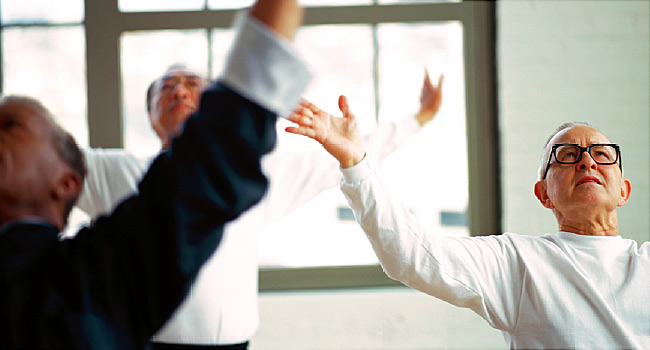Tai Chi as Good as Working Out to Shrink Waistline
June 2, 2021 — Practicing the meditative, rhythmic flow of tai chi works just as well as aerobic exercise and strength training for achieving some health benefits such as reducing waist size and improving cholesterol, new findings suggest.
Results of a randomized controlled trial published online May 31 in the Annals of Internal Medicine show that people who have a tough time with some kinds of aerobic exercise may gain similar benefits from tai chi.
The study is “very impressive,” says Bavani Nadeswaran, MD, of the University of California Irvine’s Susan Samueli Integrative Health Institute, who was not involved in the study.
Many people have arthritis or back pain, “and aerobic exercise can be hard on them,” she says. “The good thing about exercises like tai chi and yoga is that they are low-impact.” That means that people who can’t run or get access to a pool for swimming have a viable alternative.
The study included nearly 550 adults ages 50 and up in Hong Kong who were randomly assigned to engage in tai chi, aerobic exercise with strength training, or no exercise program for 12 weeks. All had waistlines greater than 35.4 inches for men and 31.5 inches for women.
The tai chi program involved three 1-hour weekly sessions of the practice, led by an instructor. Those who took part in the aerobic exercise group engaged three times each week in an exercise program of brisk tai chi and strength training, also led by an instructor.
The researchers measured changes in waistline size, cholesterol levels, and weight for about 9 months. Those who didn’t exercise had little change in their average waistline. Compared to the group that didn’t exercise, the average waistline of people in the two exercise groups declined more: by 0.7 inches more with tai chi, and 0.5 inches more with brisk walking and strength training.
Both exercise groups also had greater drops in body weight and triglyceride (a type of fat found in the blood) levels, and larger increases in high-density lipoprotein cholesterol, the “good” cholesterol, compared to the no-exercise group. All of these improvements lasted about 9 months with tai chi. But improvements in cholesterol levels did not last as long in those in the brisk-walking program.
The researchers also looked at the effects on blood pressure and blood sugar, but they found no differences between the groups.
The findings don’t necessarily mean that people with larger waistlines should dispense with their current exercise programs and turn to tai chi, says study author Parco Siu, PhD, head of the Division of Kinesiology at the University of Hong Kong’s School of Public Health. They show that tai chi is a good option if a person prefers it.
“This is good news for middle-aged and older adults who may be averse to conventional exercise,” he said in an email. But “certainly it is no problem for people to keep regularly participating in conventional exercise.”
Tai chi may also be a good choice for people without larger waistlines because practicing this form of exercise is a way to follow advice from the World Health Organization on physical activity, says Siu, though the study did not address this question.
Siu and the other researchers note several limits to the study, including that all the people who took part were in China, so how the practice would affect people in different regions is not clear. Also, almost a third of those who began the study dropped out before it ended, and they tended to have a higher body weight than those who remained to the end. The authors say this high dropout rate could mean that some people had negative experiences during their exercise programs.
Next steps, says Siu, include further assessing how tai chi affects things like blood sugar and blood pressure. Other, early stage studies also show tai chi having some positive effects on mood and cognition, he says, pointing to a need for more research.
UC Irvine’s Nadeswaran agrees. The work opens the door, she says, to taking a long-term look at how practicing tai chi might affect a person’s risk of dying from heart disease or another cause. Her team’s work involves evaluating tai chi’s effects on several conditions, including metabolic syndrome and even the aftermath of COVID-19.
While researchers pursue these questions, tai chi is accessible in many ways. Siu notes the availability of classes in this “meditation in motion” practice at community centers and fitness clubs. For people who can’t yet rejoin activities in the real world, Nadeswaran says virtual tai chi classes also are available.




buying drugs from canada https://canadianpharmacy.legal/
cheapest pharmacy canada